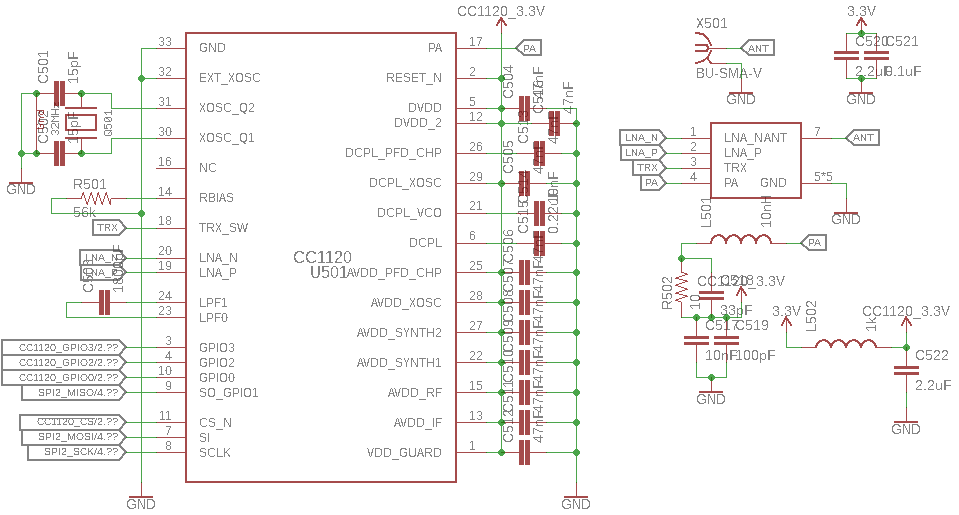I currently have two CC1120s set up in the following configuration: 1 TI CC1120 evaluation module connected to the SOC-BB-Battery Board for System-on-Chips which is connected to an Arduino via an SPI interface and another on a custom designed PCB which uses a Teensy 3.5 as a MCU (Eagle CAD schematics for this can be provided upon request for debugging purposes). I have adapted the published SPI interface for the CC1120 to work with the Teensy/Arduino hardware (our software can also be provided upon request). This software is able to control the evaluation module connected to the Arduino without any errors as far as we have detected. However, using the same software on our custom Teensy-based board, the radio seems to go into the sleep state (MARC state of 0x00) whenever we issue the SRX, STX, or SFSTXON command strobes (note that it only does this for the STX command strobe if we tell the radio to remain in the TX state after strobing STX - otherwise it returns to IDLE after STX). I have verified that the radio is going through BIAS_SETTLE and REG_SETTLE MARC states before going to sleep.
Considering that the same code produces different results on the EM and our custom board, I am wondering if there are any hardware connections I might have accidentally made that would cause this behavior.
-
Ask a related question
What is a related question?A related question is a question created from another question. When the related question is created, it will be automatically linked to the original question.


